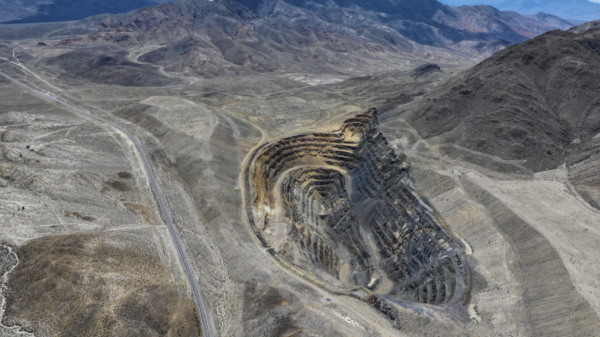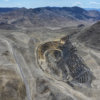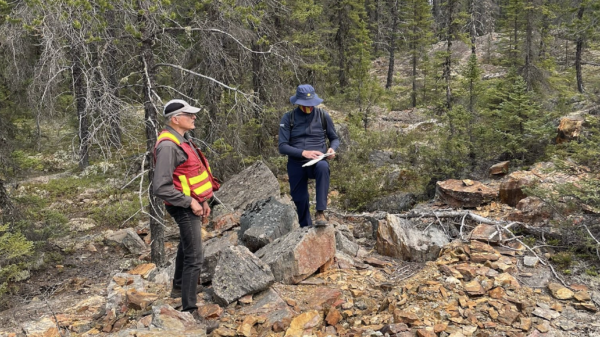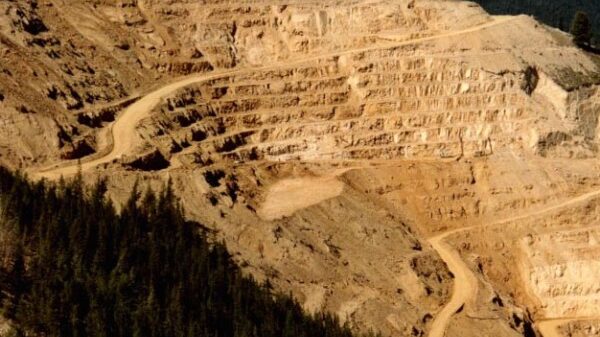Global gold discoveries have started to dwindle in size and scarcity, which may have a chilling effect on the future supply of the precious metal, according to a report by S&P Global.
Released on Friday, the report reveals that since 2020, firms have discovered only five major gold deposits, adding about 17 million ounces to the database. The New York-based firm defined a major gold discovery as containing at least 2 million ounces in reserves, resources, and past production.
In recent years, exploration budgets for gold peaked, particularly around 2012, with billions invested over the last decade.
The rate of discovery has plummeted since then despite these significant investments. Smaller gold discoveries indicate that easily accessible deposits may have been exhausted, leaving harder-to-find or less economically viable deposits due to size or location. As a result, exploration and mining costs could rise, potentially driving up the price of gold if demand holds steady or increases.
The scarcity of new, large gold discoveries could trigger several economic consequences.
A potential price surge may occur as supply struggles to meet demand, driven by industrial use and investment in gold as a safe haven. This scarcity might drive innovation in mining, encouraging more efficient technologies or alternative methods to extract gold from previously unviable deposits.
Investors may also start diversifying into other precious metals or different asset classes if gold’s scarcity causes volatile or unsustainably high prices. Countries with large gold reserves could leverage this scarcity for economic or political advantage, influencing global trade balances.
Read more: Calibre Mining strikes gold: new high-grade discovery at Nicaragua’s Limon Mine
Read more: Calibre intercepts long intervals of gold mineralization above resource grade
Most of high performing assets found decades ago
S&P has catalogued a total of 350 gold discoveries between 1990 and 2023, containing nearly 2.9 billion ounces of gold. This represents a 3 per cent increase from the 2023 analysis, which recorded 345 discoveries with 2.81 billion ounces.
While the number of discoveries and the total amount of gold continue to grow annually, S&P’s report highlights that most of these assets were found decades ago and only recently qualified as notable discoveries. The five new discoveries added just 22 per cent of the 79 million ounces included in the 2024 update compared to the previous year’s analysis.
The report also highlighted that the average size of recent gold discoveries has decreased to about 3.5 million ounces, down from 5.5 million ounces during 2010-2019. Over the past 10 years, none of the discoveries have made it into the list of the 30 largest gold finds.
S&P research analyst Paul Manalo stated that this trend supports the firm’s long-held view that the industry’s focus on older and known deposits reduces the likelihood of discovering large gold deposits in early-stage prospects.
“The lack of quality discoveries in the recent decade does not bode well for the gold supply,” said Manalo.
“Based on the latest monthly Gold Commodity Briefing Service, we expect gold supply to peak in 2026 at 110 million ounces, driven by increased production Australia, Canada and the US — countries that also account for the most discovered gold.”
He also added that gold supply is expected to decline to 103 million ounces in 2028, which will result in a drop in supply from these countries.
Read more: Calibre Mining shows analysts the ropes at the Valentine gold project
Read more: Calibre Mining finds higher gold rates at Marathon Pit
Scarcity of gold discoveries could have economic effects
The scarcity of significant new gold discoveries can have a wide range of economic effects.
For instance, gold prices are likely to increase if supply fails to meet rising demand, driven by both industrial needs and its role as a safe-haven investment. According to a study from the World Economic Forum, mining innovations may become both critical and necessary to ease the capital expenditure burden.
The forum suggests that technological developments in artificial intelligence, machine learning and digital twins, potentially improving efficiency in locating and extracting gold from smaller or less economically viable deposits. These developments could help reduce exploration costs and enhance production rates from existing sites.
Meanwhile, geopolitically, countries with significant gold reserves may use this scarcity to their advantage, leveraging their control over resources in trade or diplomatic negotiations.
Historically, geopolitical events like the Russian invasion of Ukraine have triggered increased gold demand, as investors seek refuge in assets that are perceived to be less vulnerable to economic and political instability.
As tensions rise globally, the influence of gold as a strategic reserve might further grow, amplifying its impact on international economic dynamics.
.
joseph@mugglehead.com













